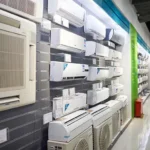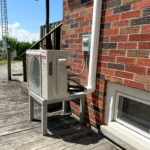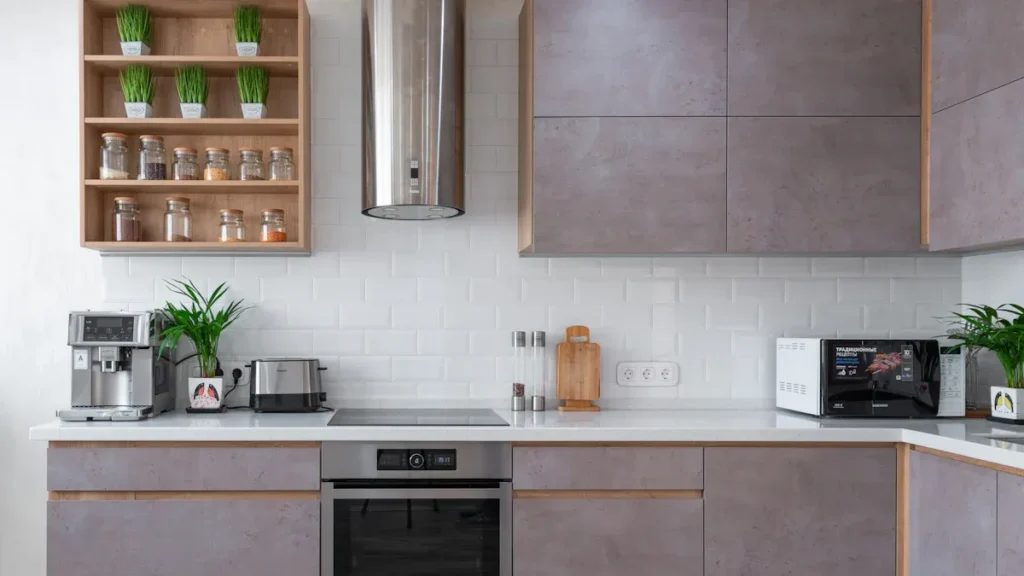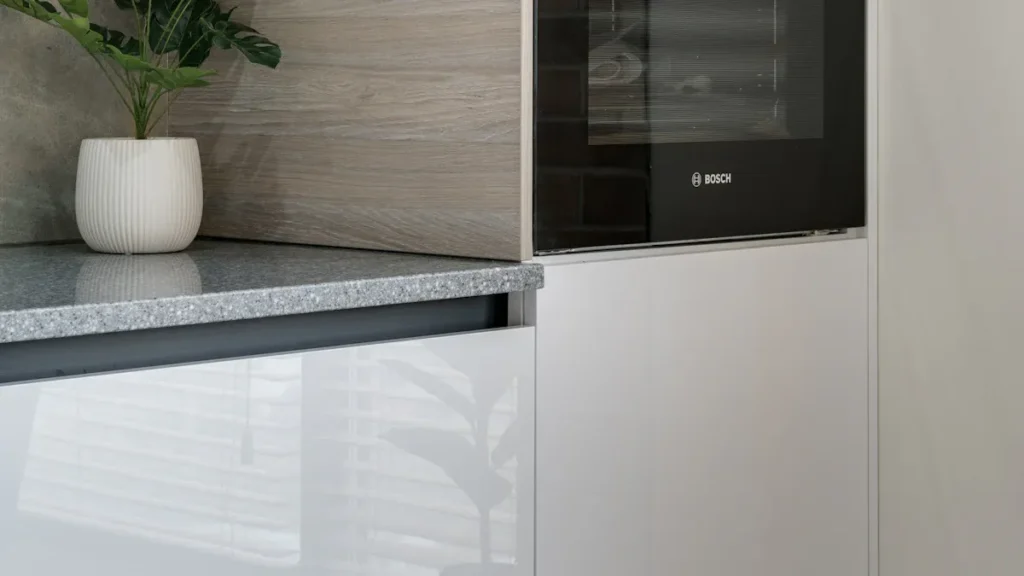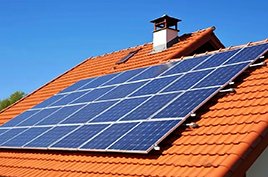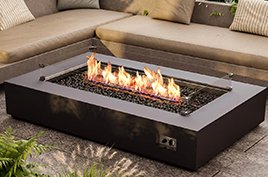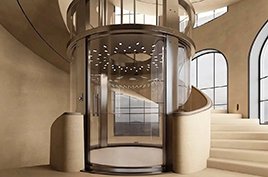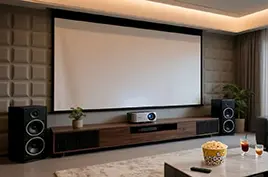Here are the five most common types of air conditioner outle. NEMA 5-15, NEMA 5-20, NEMA 6-15, NEMA 6-20, plus plug styles like Parallel, Perpendicular, Tandem, and Large Tandem.
When you match the right outlet to your AC, you lower shock and fire risks.
Aspect | Details |
|---|---|
Importance of Outlet Choice | Using the correct outlet is crucial to prevent electrical hazards such as shock and fire risks. |
Outlet Specifications | Electrical receptacles come in many shapes and sizes, used for varying purposes based on voltage and current. |
Compatibility | Medium to large air conditioners generally cannot be plugged into standard receptacles due to higher current draw. |
Common Types of Air Conditioner Outlets

When you look at air conditioners, you’ll notice there are several common types of outlets. Each one has its own design, voltage, and best use. Picking the right electrical outlet keeps your home safe and your AC running smoothly. Here’s a quick look at the main types of outlets you’ll see for air conditioners:
Outlet Type | Current Rating | Voltage Rating | Description |
|---|---|---|---|
NEMA 5-15 | 15A | 120V | Common household outlet |
NEMA 5-20 | 20A | 120V | Required in bathrooms and behind refrigerators |
NEMA 6-15 | 15A | 240V | Used for in-wall air conditioners |
NEMA 6-20 | 20A | 240V | Also for in-wall air conditioners, found in garages |
NEMA 5-15 (115V Standard Plug)
You probably see this outlet every day. The NEMA 5-15 is the most common type in homes. It has two parallel slots and a round grounding hole. This electrical outlet runs at 120 volts and 15 amps. You use it for many small appliances, not just air conditioners.
Typical uses for NEMA 5-15 outlets:
Small air conditioners
Computers
Monitors
Printers
Televisions
Small kitchen gadgets
Pros:
Easy to find in most rooms
Works with many small AC units
Simple to use
Cons:
Not strong enough for large air conditioners
Can overload if you plug in too many devices
If you have a small window AC, this outlet is usually all you need. Just make sure your air conditioner plug types match the outlet.
NEMA 5-20 (125V Heavy-Duty Plug)
The NEMA 5-20 looks a lot like the 5-15, but it has a special slot. One slot is turned sideways, so you can spot it easily. This electrical outlet gives you 120 volts and 20 amps. You’ll find it in places that need more power, like kitchens, bathrooms, or behind big appliances.
Safety Consideration | Description |
|---|---|
Grounding System | A 3-prong grounding system is essential to prevent electric shocks and equipment damage. Regular checks for grounding integrity are necessary. |
Compliance with NEC | Following the National Electrical Code (NEC) ensures that grounding systems are reliable and safe for high-power applications. |
Regular Inspections | Conducting regular inspections helps identify issues like corrosion or damage in grounding connections, which can compromise safety. |
Pros:
Handles bigger air conditioners than standard outlets
Safer for heavy-duty use with proper grounding
Cons:
Not as common as the 5-15 in living rooms or bedrooms
Needs a special plug on your AC
If your air conditioner needs more power, you’ll want this outlet. Always check the grounding and follow safety rules.
NEMA 6-15 (230V Plug)
The NEMA 6-15 is a step up from standard outlets. This electrical outlet gives you 240 volts and 15 amps. It has two horizontal slots and sometimes a ground pin. You’ll see this type for bigger window ACs, ductless mini-splits, or even some central air units.
NEMA 6-15 | Other Common Outlets | |
|---|---|---|
Used for | Large window ACs, ductless mini-splits, or 2.5-ton central units | Varies by outlet type |
Outlet type | Heavy-duty, 2-prong or 3-prong | Standard 2 or 3-prong |
Circuit requirement | 20–30 amp, 230V breaker | Typically 15-20 amp, 120V |
Compatibility | Cannot be plugged into standard wall outlet | Can be used with standard appliances |
Outlet Type | Voltage | Amperage |
|---|---|---|
NEMA 6-15 | 240V | 15A |
Pros:
Perfect for larger air conditioners
Delivers more power for better cooling
Cons:
Needs a special circuit and breaker
Not compatible with standard outlets
If you have a big AC, you’ll need this outlet. You can’t use it for regular appliances, so make sure you have the right setup.
NEMA 6-20 (240V Plug)
The NEMA 6-20 is another heavy-duty electrical outlet. It gives you 240 volts and 20 amps. You’ll find this type in garages or for large, standalone air conditioning units. It looks like the 6-15 but can handle even more power.
Application Type | Description |
|---|---|
Air Conditioning Units | Used for window-mounted or standalone units that require higher voltage and amperage than standard outlets can provide. |
Pros:
Handles the biggest air conditioners in homes
Great for commercial spaces too
Cons:
Needs a dedicated circuit
Not found in every home
If you want to run a powerful AC, this outlet is the way to go. Just remember, you can’t use it for small appliances.
Plug Styles (Parallel, Perpendicular, Tandem, Large Tandem)
You’ll notice different types of outlets have different plug shapes. These plug styles help you match your air conditioner to the right electrical outlet.
Parallel: Two straight slots, side by side. Used for standard outlets like NEMA 5-15.
Perpendicular: One slot is turned sideways. You’ll see this on NEMA 5-20 outlets.
Tandem: Two horizontal slots. Common on NEMA 6-15 outlets.
Large Tandem: Bigger horizontal slots for heavy-duty plugs, like NEMA 6-20.
Tip: Always check your air conditioner plug types before buying a new unit. Matching the plug style to the outlet keeps your AC safe and working right.
When you know the common types of electrical outlets and plug styles, you can pick the best one for your air conditioner. This helps you avoid problems and keeps your home cool all summer.
Electrical Outlet Features
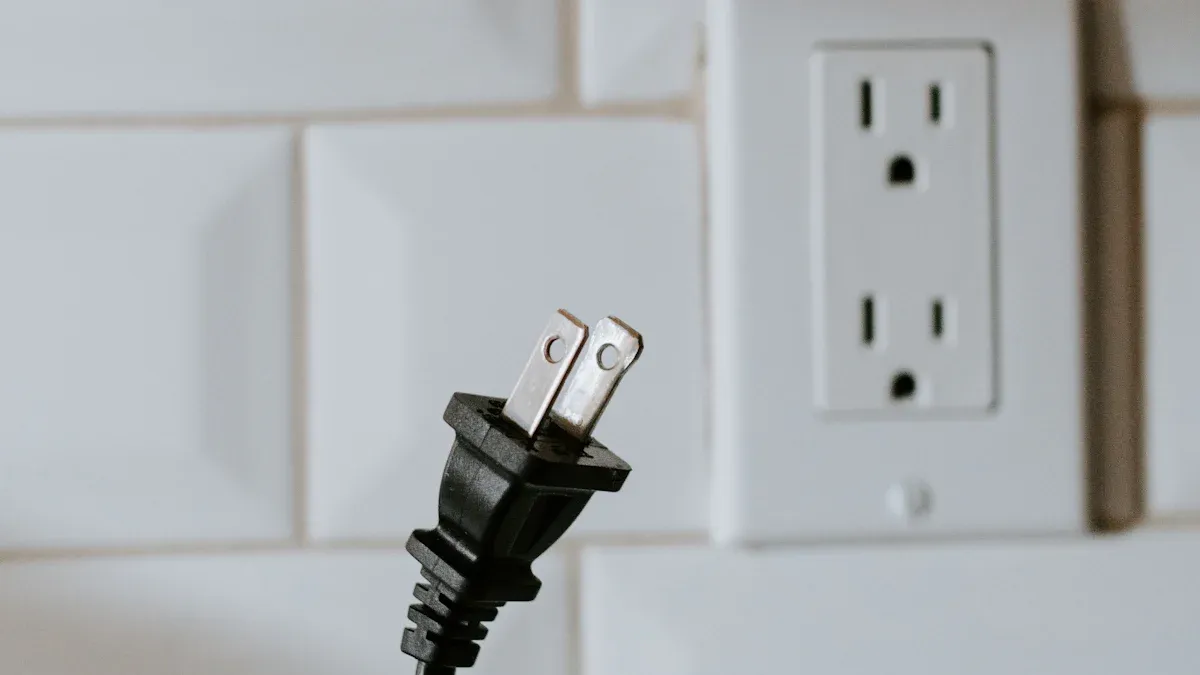
Design
When you look at an electrical outlet, you might notice different shapes and sizes. Each outlet design helps you match your air conditioner to the right power source. Some outlets have parallel slots, while others use a perpendicular or tandem style. The design of an electrical outlet tells you how much power it can handle. For example, a large tandem outlet can support a bigger air conditioner. You should always check the design before plugging in your AC. This step keeps your electrical system safe and helps your air conditioner work well.
Safety
Safety matters every time you use an electrical outlet. You want to avoid shocks, fires, or damage to your air conditioner. In North America, outlets must meet strict safety standards. Look for these certifications on your electrical outlet:
Certification | Description | Authority |
|---|---|---|
Safety certification provided by Intertek, widely accepted in North America, ensuring compliance with safety standards. | Intertek | |
UL | Certification by Underwriters Laboratories, indicating that the product has passed stringent safety tests. | Underwriters Laboratories |
You should also check for warm outlets or buzzing sounds. These signs mean your electrical outlet might be overloaded. If you notice any problems, call a licensed electrician. They can inspect your electrical system and make sure your outlet is safe for your air conditioner.
Compatibility
Not every electrical outlet works with every air conditioner. You need to match the outlet to your AC unit. Sometimes, new air conditioners use different refrigerants or advanced technology. This can cause problems if your electrical outlet or system is old. Here are some common compatibility issues:
Refrigerant mismatch between old and new AC units
Warranty problems if you use the wrong outlet
New features that older electrical systems cannot support
Before you install a new air conditioner, check if your electrical outlet and system can handle it. You might need a dedicated circuit or even an upgrade to your electrical panel. A professional can help you choose the right outlet and keep your home safe.
Types of Outlets Comparison
Key Features
When you compare air conditioner outlets, you notice each one has its own electrical features. You want to match your AC unit to the right outlet so you get safe and reliable cooling. Here’s a table that shows how different air conditioners connect to an electrical outlet or power outlet:
Air Conditioner Type | Voltage | Amperage Requirements | Plug Configuration |
|---|---|---|---|
Mini Split | 208/240 or 110/120 | 15 to 45 amps | Dedicated circuit required |
PTAC | 208/240 or 265/277 | 15, 20, or 30 amps | Interchangeable or pre-attached |
Window Air Conditioner | 110/120 or 208/240 | Varies by size | Standard outlet or specialized |
Through-the-Wall (TTW) | 110/120 or 208/240 | Dedicated circuit | Dedicated circuit recommended |
208/240 | 15-60 amps | Hard-wired into electrical system |
You see that each electrical outlet has a different voltage and amperage. Some AC units need a dedicated power outlet, while others work with standard outlets. If you use afci outlets, you add extra protection against electrical fires. You should always check your electrical system before installing a new AC.
Tip: AFCI outlets help prevent dangerous electrical arcs. You should ask your electrician about afci protection for your air conditioner.
Pros and Cons
Every outlet type comes with its own set of benefits and drawbacks. You want to know what works best for your space and safety. Here’s a quick look at the pros and cons for each air conditioner type and its electrical outlet:
Air Conditioner Type | Pros | Cons |
|---|---|---|
Central Air Conditioners | Efficient cooling, quiet operation, improved air quality, thermostat control | Expensive, needs professional installation, high energy use, ductwork maintenance |
Window Air Conditioners | Affordable, easy to install, space-saving, targeted cooling | Limited cooling, blocks window, can be noisy, needs regular cleaning |
Easy to move, simple setup, flexible cooling, does not block windows | Lower cooling power, noisy, less energy efficient, needs upkeep | |
Quick cooling, easy filter access, simple installation | Only cools one room, airflow can be blocked, not for large spaces |
You should always use the right electrical outlet for your AC. If you use afci outlets, you lower the risk of electrical problems. AFCI outlets protect your home from electrical arcs and keep your family safe. You want to make sure your power outlet matches your air conditioner’s needs.
Choosing the Right Outlet
Room Size
Picking the right electrical outlet for your air conditioner starts with your room size. You want your cooling to match the space. Here are some things to check:
Cooling capacity in BTUs should fit your room’s square footage.
Adjust for sunlight and how many people use the room.
Place your air conditioning plug where air can flow freely.
High ceilings may need a bigger conditioner.
Good insulation helps your cooling work better.
Local climate can change your cooling needs.
Ductwork condition affects how well your conditioner cools.
Heat from appliances or lots of sun means you might need a stronger unit.
Well-insulated windows help keep cool air inside.
If you have a large room or a common ptac unit, you may need a special electrical outlet. Smaller rooms often work with standard outlets or even usb outlets for extra convenience.
AC Model
Different air conditioning models use different amounts of power. Some models, like a packaged terminal air conditioner, need a dedicated electrical outlet because they use more energy. The average home uses about 2,000 kWh each year for air conditioning. That’s around 17% of your total electricity! Bigger models need outlets that can handle surge wattage, which is the extra power needed to start the unit. Always check your air conditioning plug and make sure your outlet matches the model’s needs. Some newer models even come with usb outlets for charging devices.
Installation Tips
Safe installation keeps your conditioner running well and your home protected. Here are some tips:
Tip | Description |
|---|---|
Choose the right location | Place the electrical outlet where the air conditioner works best. |
Run electrical wire properly | Follow safety rules for all electrical wiring. |
Hire a professional if unsure | Call an electrician for complex electrical outlet setups. |
Pick a shaded window for your air conditioning plug.
Keep the area around the outlet clear.
Never use extension cords or power strips for your conditioner.
Make sure your outlet is a three-pronged type.
Check the window’s condition before you install.
Use support brackets if the manufacturer says so.
Make sure your conditioner drains water properly.
If you install your electrical outlet the wrong way, you risk inefficient cooling, electrical safety problems, and noisy operation. When in doubt, call a professional. They know how to handle every type of outlet, including usb outlets.
You’ve seen the five main air conditioner outlet types and how each electrical setup fits different needs. Check your electrical panel, compare plug shapes, and look at your unit’s label. Here’s a quick guide:
Outlet Type | Used For | Circuit Requirement |
|---|---|---|
115V Standard Plug | Small window or portable ACs | 15 amps, 120V |
125V Heavy-Duty | Mid-sized window units | Dedicated 20-amp circuit |
230V Plug | Large window or mini-splits | 20–30 amp, 230V breaker |
Twist-Lock Plug | Commercial or high-BTU systems | 30-amp, 230V |
Look at the label on your air conditioner.
Compare plug shape to a NEMA chart.
Take a picture of your wall outlet.
Call a certified HVAC pro if you’re unsure.
Always schedule an electrical inspection every 10 years and test your GFCI outlets monthly. If you have questions about your electrical system or installation, talk with a professional. Safety and compatibility keep your home cool and protected.
FAQ
What makes smart outlets different from regular outlets?
Smart outlets let you control your AC with your phone or voice. You can set schedules, track energy use, and even connect usb devices for charging.
Do I need gfci outlets for my air conditioner?
You should use gfci outlets in wet areas like kitchens or bathrooms. Gfci helps protect you from shocks. A ground fault circuit interrupter will trip if it senses danger.
Can I plug a usb fan or smart device into the same outlet as my AC?
You can use usb ports on smart outlets for fans or chargers. Just make sure your smart outlet can handle the total load. Some smart outlets even have built-in gfci.
Tip: Always check if your smart outlets have gfci or ground fault circuit interrupter features. This keeps your devices and usb gadgets safe.
Feature | Smart Outlets | GFCI Outlets | USB Ports |
|---|---|---|---|
Remote Control | ✅ | ❌ | ❌ |
Shock Protection | ✅ | ✅ | ❌ |
USB Charging | ✅ | ❌ | ✅ |


